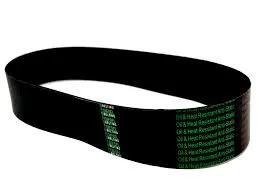- Arabic
- French
- Russian
- Spanish
- Portuguese
- Turkish
- Armenian
- English
- Albanian
- Amharic
- Azerbaijani
- Basque
- Belarusian
- Bengali
- Bosnian
- Bulgarian
- Catalan
- Cebuano
- Corsican
- Croatian
- Czech
- Danish
- Dutch
- Afrikaans
- Esperanto
- Estonian
- Finnish
- Frisian
- Galician
- Georgian
- German
- Greek
- Gujarati
- Haitian Creole
- hausa
- hawaiian
- Hebrew
- Hindi
- Miao
- Hungarian
- Icelandic
- igbo
- Indonesian
- irish
- Italian
- Japanese
- Javanese
- Kannada
- kazakh
- Khmer
- Rwandese
- Korean
- Kurdish
- Kyrgyz
- Lao
- Latin
- Latvian
- Lithuanian
- Luxembourgish
- Macedonian
- Malgashi
- Malay
- Malayalam
- Maltese
- Maori
- Marathi
- Mongolian
- Myanmar
- Nepali
- Norwegian
- Norwegian
- Occitan
- Pashto
- Persian
- Polish
- Punjabi
- Romanian
- Samoan
- Scottish Gaelic
- Serbian
- Sesotho
- Shona
- Sindhi
- Sinhala
- Slovak
- Slovenian
- Somali
- Sundanese
- Swahili
- Swedish
- Tagalog
- Tajik
- Tamil
- Tatar
- Telugu
- Thai
- Turkmen
- Ukrainian
- Urdu
- Uighur
- Uzbek
- Vietnamese
- Welsh
- Bantu
- Yiddish
- Yoruba
- Zulu
Sep . 22, 2024 21:38 Back to list
car belt drive
Understanding Car Belt Drives An Essential Component of Modern Vehicles
The car belt drive system is a crucial component in the operation of internal combustion engines, playing a vital role in transferring power and ensuring the efficient functioning of various engine components
. At its core, a belt drive system consists of a series of belts that connect different parts of the engine, most commonly the crankshaft and the accessories such as the alternator, water pump, power steering pump, and air conditioning compressor.One of the primary types of belt drives in modern vehicles is the serpentine belt. Unlike older vehicles that often used multiple belts for different components, the serpentine belt is a single, continuous belt that winds around several pulleys. This design not only simplifies the engine compartment but also enhances efficiency, reduces weight, and minimizes maintenance requirements. The serpentine belt is made from durable rubber compounds, ensuring it can withstand the heat and stress of an operating engine.
The function of the car belt drive goes beyond simple power transmission. It plays a critical role in maintaining the overall performance and longevity of the vehicle. For instance, the alternator, which generates electricity to power the vehicle's electrical systems, relies on the belt drive for its operation. If the belt fails or becomes loose, the alternator may not function correctly, leading to battery drainage and potential electrical failures.
car belt drive

Another essential function of the belt drive is to power the water pump, which is integral to the vehicle’s cooling system. A malfunctioning belt can result in inadequate coolant circulation, leading to engine overheating. Moreover, the belt also drives the power steering pump, making steering easier for the driver. Any slip or breakage in the belt can affect steering performance, making it a safety concern.
Regular maintenance of the belt drive system is essential. Common issues may include wear and tear, cracks, or fraying of the belt, which can lead to a complete failure if not addressed timely. It's advisable to check the belt at regular intervals, especially during routine vehicle servicing. Many vehicle manufacturers recommend replacing the serpentine belt every 60,000 to 100,000 miles, although this can vary based on driving conditions and habits.
In conclusion, the car belt drive system is a fundamental aspect of vehicle functionality. By understanding its importance, drivers can ensure better maintenance of their vehicles, ultimately leading to safer and more reliable transportation. Awareness and attention to this component can prevent unexpected breakdowns and enhance the overall driving experience. Emphasizing regular checks and timely replacements can save vehicle owners from more significant issues down the road, keeping their cars running smoothly for years to come.
-
Variable Belt Drive AI Optimized for Efficiency
NewsAug.05,2025
-
High-Quality Tensioner Belt Pulley - Durable & Efficient
NewsAug.03,2025
-
Premium Timing Belt Factory | AI-Optimized Solutions
NewsAug.02,2025
-
Heat Joining Drive Belt | High-Durability Fusion Solution
NewsJul.31,2025
-
Timing Belt Video Guide: Selection, Design & Quality Insights
NewsJul.30,2025
-
High-Performance Variable Speed V Belt Drive for Efficient Power Transmission
NewsJul.30,2025

